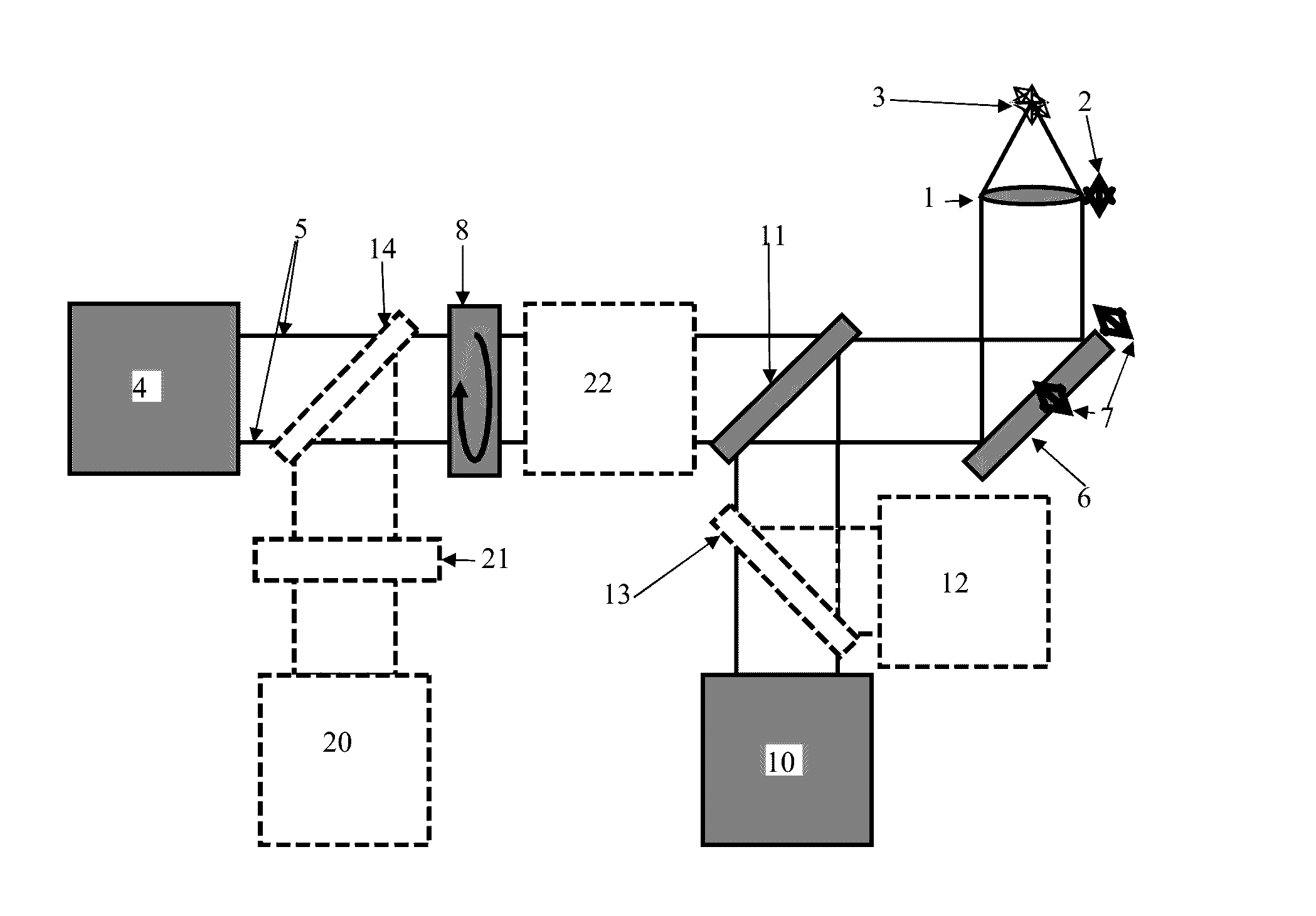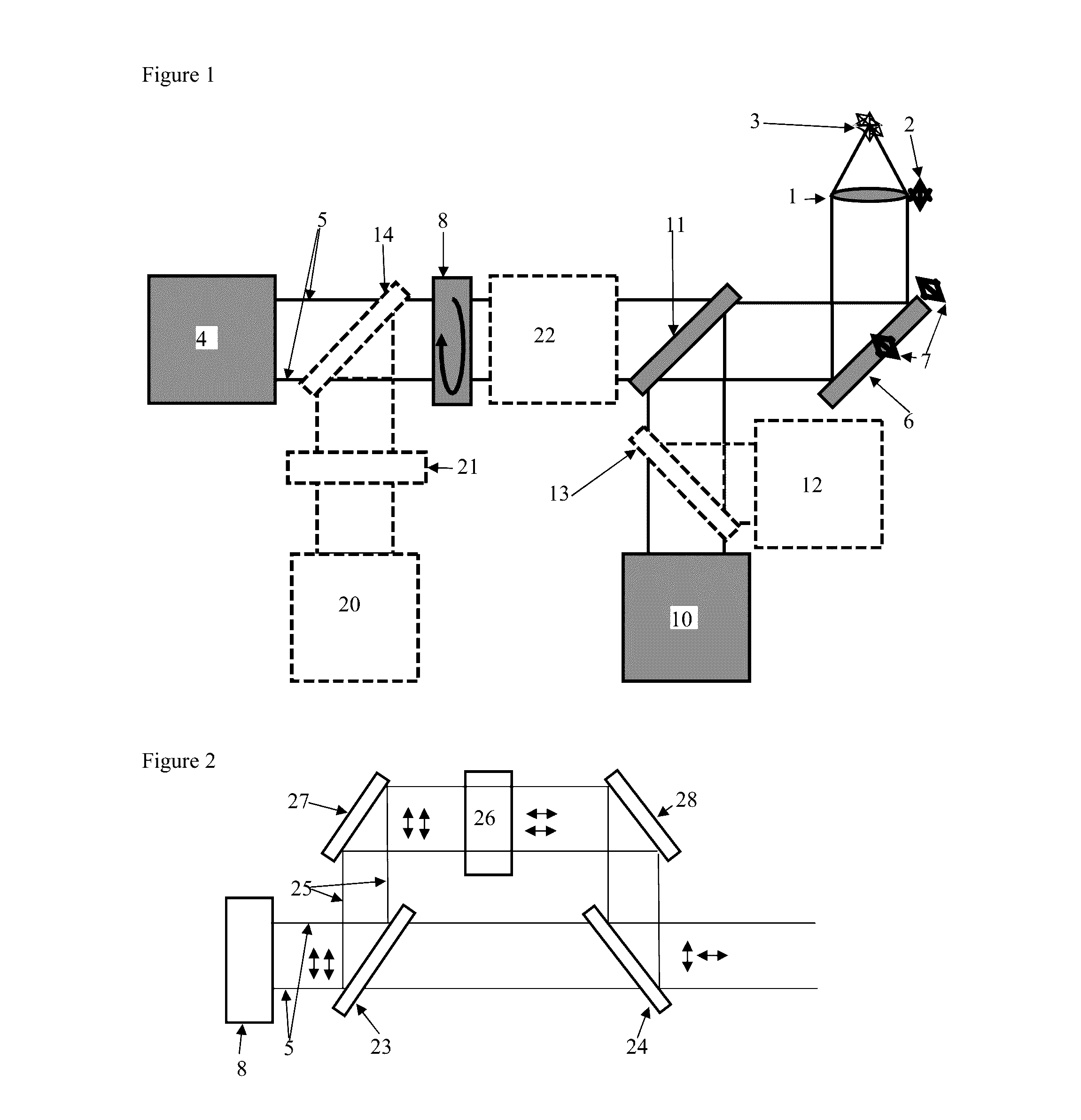High resolution light microscope
a light microscope, high-resolution technology, applied in the direction of instruments, optical elements, fluorescence/phosphorescence, etc., can solve the problems of time-consuming deflection of excitation light over the sample, high device precision of optical path alignment, time-consuming sequential irradiation and locating of individual molecules, etc., to achieve high resolution and reduce configuration effort
- Summary
- Abstract
- Description
- Claims
- Application Information
AI Technical Summary
Benefits of technology
Problems solved by technology
Method used
Image
Examples
Embodiment Construction
[0037]The invention is now described in more details with reference to the figures that schematically show in
[0038]FIG. 1 an embodiment,
[0039]FIG. 2 a section of a preferred embodiment,
[0040]FIG. 3, A to F, the modulation and demodulation in an embodiment of the process with excitation light only, and
[0041]FIG. 4, A to F, the modulation and demodulation in an embodiment of the process with excitation light and de-excitation light.
[0042]Using the focusing device 2, objective 1 can be focused on sample 3 which contains fluorescent molecules. An excitation light source 4 produces excitation light 5 the beam path of which is directed into the objective 1, shown here by means of a mirror 6 that is deflecting and controlled by means of the control device 7, e.g. for controlled guidance of excitation light 5 over sample 3.
[0043]The polarization modulator 8 is configured to modulate the polarization of the excitation light 5, which preferably is a linear polarization direction, with at leas...
PUM
| Property | Measurement | Unit |
|---|---|---|
| angle | aaaaa | aaaaa |
| angle | aaaaa | aaaaa |
| angle | aaaaa | aaaaa |
Abstract
Description
Claims
Application Information
 Login to View More
Login to View More - R&D
- Intellectual Property
- Life Sciences
- Materials
- Tech Scout
- Unparalleled Data Quality
- Higher Quality Content
- 60% Fewer Hallucinations
Browse by: Latest US Patents, China's latest patents, Technical Efficacy Thesaurus, Application Domain, Technology Topic, Popular Technical Reports.
© 2025 PatSnap. All rights reserved.Legal|Privacy policy|Modern Slavery Act Transparency Statement|Sitemap|About US| Contact US: help@patsnap.com



